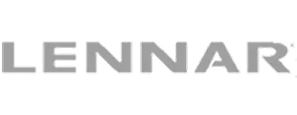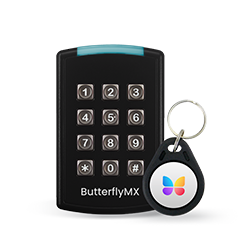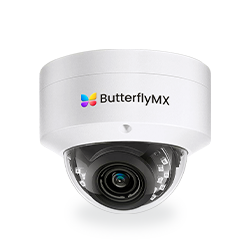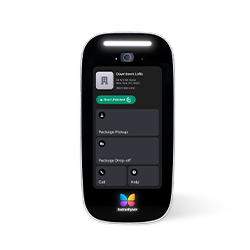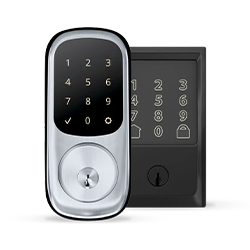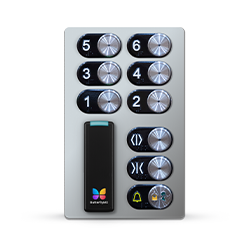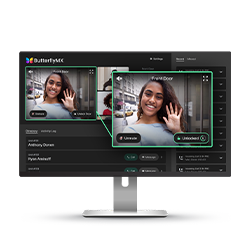Key takeaways
- Renter expectations, competition, and sustainability regulations drive technology adoption in Seattle’s multifamily market.
- Top trends include smart access control, AI-driven management, sustainability upgrades, resident experience platforms, and stronger data security.
- Tech-enabled properties often achieve higher rents, lower vacancies, and greater long-term asset value.
- Strategic technology investments should focus on ROI, scalability, and vendor reliability to stay competitive.

Seattle’s multifamily market in 2025 is defined by strong renter demand, a steady development pipeline, and an increasingly competitive leasing environment. As new properties come online and existing communities work to retain residents, technology has emerged as a critical differentiator. From mobile-based building access to AI-powered management tools, the property technology landscape is transforming how owners, managers, and developers operate in the city’s fast-paced real estate industry.
For industry professionals, staying ahead of these changes is essential. The right technology, like ButterflyMX’s Access Control System, Video Intercom, Front Desk Station, and Package Room, can streamline operations, enhance the resident experience, meet regulatory requirements, and position a property for long-term value growth. In this post, we’ll explore the top multifamily property technology trends shaping Seattle’s market in 2025 and what they mean for your portfolio.
This post covers:
- What is driving technology adoption in the multifamily market in Seattle?
- Top multifamily property technology trends in Seattle
- How these trends impact the multifamily investment outlook Seattle
- What to consider before investing in new property technology
- Positioning your property for the future
- FAQs: Multifamily property technology trends Seattle
More than 40K, 5-star reviews!

Video Intercoms
Open doors, gates & garages from anywhere.

QR Code Intercom
Smartphone-based visitor access.
Access Control
Fob, key cards, PINs, and mobile apps.
Security Cameras
Visibility throughout your property.
Vehicle Access
Hands-free access for gates & garages.
Package Room
Receive, store, and manage deliveries.
Smart Locks
Connect to all major brands and models.
Elevator Controls
Unlock key-fobbed elevators for anyone.
Front Desk Station
See all your doors and cameras in one place.
What is driving technology adoption in the multifamily market in Seattle?
Seattle’s multifamily market sits at the intersection of strong renter demand, a robust tech-driven economy, and increasingly competitive property development.
Several forces are accelerating the adoption of advanced real estate technology across the city.
First, tenant expectations are shifting rapidly. With a large portion of the renter base working in the tech sector, residents increasingly expect the same level of digital convenience from their living spaces as they get from their workplace or consumer apps. From mobile access to automated service requests, convenience and connectivity have become baseline requirements rather than nice-to-have amenities.
Second, market competition is heating up. New multifamily projects are entering the pipeline, and existing properties must differentiate themselves to retain tenants. Owners and managers are turning to technology as a cost-effective way to deliver premium amenities and operational efficiency without significantly increasing headcount.
Third, regulatory pressures are growing. Seattle’s energy benchmarking requirements and carbon reduction goals are pushing building owners to adopt smart, sustainability-focused systems. These technologies not only help properties stay compliant but also reduce operating costs and appeal to environmentally conscious renters and investors.
Finally, the investment community is watching closely. Institutional investors and lenders increasingly favor properties with strong technology infrastructure because it signals operational stability, future-proofing, and competitive positioning. In a city where multifamily cap rates remain tight, tech adoption can be a differentiating factor in securing financing and maximizing asset value.
Top multifamily property technology trends in Seattle
Seattle’s multifamily market is evolving quickly, and technology is at the heart of that transformation. From smarter apartment technology data-driven management tools, these innovations are helping properties stand out in a competitive landscape while meeting the demands of tech-savvy renters.
Top trends shaping how multifamily communities in Seattle operate and deliver value in 2025:
- Smart access control and building entry
- AI-driven property management tools
- Sustainability-focused technology
- Resident experience platforms
- Data security and compliance
Learn how ButterflyMX works:
1. Smart access control and building entry
Mobile-based access control systems are replacing traditional keys and fobs across Seattle’s multifamily properties. These cloud-managed solutions allow residents to unlock doors from their smartphones while giving property managers the ability to monitor and manage access remotely.
The ButterflyMX Access Control System offers this flexibility for lobbies, garages, amenity spaces, and even individual units, helping properties provide a secure and seamless entry experience across the building.
2. AI-driven property management tools
Artificial intelligence is reshaping operations in Seattle’s multifamily sector. From predictive maintenance alerts that prevent costly equipment failures to AI-assisted leasing tools that optimize rental pricing, these platforms help owners and managers maximize net operating income (NOI).
When paired with connected devices like the ButterflyMX Video Intercom, managers gain real-time data on property entry activity, enabling smarter decision-making and enhanced building security.
3. Sustainability-focused technology
Seattle’s strict energy benchmarking requirements and carbon reduction targets are driving the adoption of sustainable building technologies. Smart HVAC controls, energy-efficient lighting, and water conservation systems are now common upgrades.
Access control solutions like ButterflyMX’s cloud-based platform can also support sustainability goals by reducing the need for physical keys and streamlining vendor and delivery access without on-site staff.
4. Resident experience platforms
Integrated resident portals and apps are changing the way tenants interact with their communities. These platforms allow residents to pay rent, submit maintenance requests, book amenities, and receive building announcements from a single interface.
ButterflyMX’s mobile app, paired with products like the Video Intercom, Front Desk Station, and Package Room, centralizes secure entry, visitor management, and package retrieval, making day-to-day living more convenient for residents.
5. Data security and compliance
As more building systems move to the cloud, data protection has become a top priority. Seattle multifamily operators are investing in cybersecurity measures to safeguard resident information and ensure compliance with Washington State privacy laws.
Solutions like ButterflyMX’s encrypted, cloud-based Access Control and Video Intercom systems help properties maintain strict security standards while delivering modern convenience.
How these trends impact the multifamily investment outlook Seattle
The integration of advanced property technology is reshaping investment potential across Seattle’s multifamily sector. Buildings that adopt these tools often command higher rents, experience lower vacancy rates, and see improved tenant retention, all of which contribute to stronger net operating income (NOI). In a market where multifamily cap rates in 2025 remain compressed, these incremental gains can make a measurable difference in returns.
Technology also plays a role in transaction activity. Properties with smart access control, sustainability features, and integrated management systems are more attractive to both institutional and private investors, contributing to steady multifamily transaction volume in 2025 despite broader economic uncertainty. CBRE and other market analysts note that well-amenitized, tech-enabled assets tend to maintain pricing power even in softer leasing environments.
For developers and owners, these trends highlight the importance of future-proofing multifamily housing. Tech-forward buildings not only meet current renter demands but also position assets to remain competitive and valuable in the long term, even as market conditions shift.
What to consider before investing in new property technology
Before committing to a new technology upgrade, it’s important to weigh both the immediate and long-term impacts on your property. Start with a clear ROI analysis and look beyond the upfront purchase and installation costs to factor in operational savings, potential rent premiums, and reduced vacancy rates.
Scalability is another key consideration, especially for owners and managers with multiple properties. Choose systems that can be deployed portfolio-wide and adapt as your operational needs evolve. A solution that integrates seamlessly with your existing building systems, such as property management software or other access control tools, will deliver the greatest long-term value.
Finally, vendor reliability can make or break your investment. Prioritize providers with a proven track record, responsive customer support, and strong data security protocols. In a competitive market like Seattle, the right technology partner will help you maintain peak operational efficiency while enhancing your property’s appeal to both residents and investors.
Positioning your property for the future
In Seattle’s fast-moving multifamily market, technology is no longer a luxury; it’s a necessity for staying competitive. Properties that invest early in smart access, AI-driven management, sustainability upgrades, and resident experience platforms are better equipped to meet renter expectations, comply with regulations, and protect long-term asset value.
The key is to approach technology adoption strategically. Focus on solutions that align with your operational goals, offer measurable returns, and can scale with your portfolio. By taking a proactive approach, you’ll position your property not just to succeed in today’s market, but to adapt and thrive as new innovations and market shifts emerge.
FAQs: Multifamily property technology trends Seattle
What technology is most in demand in Seattle’s multifamily market?
Mobile-based access control systems, sustainability-focused building solutions, and AI-driven property management tools are leading adoption among Seattle multifamily properties in 2025.
How does technology affect multifamily investment returns?
Technology can boost rent premiums, reduce vacancy rates, and lower operating expenses, all of which contribute to higher net operating income (NOI) and stronger long-term asset performance.
Are sustainability regulations influencing tech adoption in Seattle?
Yes. Seattle’s energy benchmarking requirements and carbon reduction goals are pushing owners to invest in smart HVAC, lighting controls, and water-saving systems to remain compliant and appeal to eco-conscious renters.
Will multifamily prices drop in Seattle in 2025?
While certain submarkets may see price adjustments, tech-enabled properties tend to maintain stronger demand and pricing power due to their operational efficiency and appeal to tenants and investors.

Get your free quote!
Fill in the form below, and we'll email you right back.
Want a free quote?
Fill in the form below, and we'll email you right back.
You’ll be redirected shortly...



